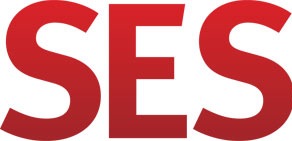No More One-Night Stands (Ending the Conversions Obsession)
Just wrapped up the keynote talk at SES San Francisco (@SESConf) with Avinash Kaushik, Google’s Digital Marketing Evangelist. Enigmatic guy, and he has (a lot of) good stuff to say about digital strategy, and—more importantly—our obsession with conversion.
Avinash explains that if you’re the lucky owner of one of the top 50 websites in the U.S., your conversion rate is around 2%. But you’re not the owner of one of the U.S. top 50. And that means your conversion rate is 1% or less (probably less). Let that simmer for a minute: Your conversion rate is less than 1%. And it’s ok.
Rethinking Website Conversions
But conversion is a big deal to us, isn’t it? For some of us, it’s the only deal.
We spend hours looking to get value out of the people engaging on the site. Conversion is, and should be, the most important thing our websites exist to do. Conversion is a website’s raison d’etre: Show me the money.
The problem is, as Kaushik sees it, when we only measure conversions we’re meeting the very lowest bar on Internet metrics. That’s a shame. The revenue is a macroconversion, but it’s not the end of the story. If we’re only measuring conversion—if that is our sole measure of success—we’re saying (direct quote, folks): “I choose to be incompetent.”
Instead, let’s ask, “Are there other things that people are doing on the website that might add value but don’t equal conversion?” The benefits of this shift from obsession are two-fold:
- Be less lame
Focus on more than the lame stuff (CPCs, click-through rates, etc.). It’s no good to optimize based on these analytics. There’s a more beautiful place to live in, where you can truly make smart decisions, and you can get there by computing the real economic value of your site. - Get the big picture
What’s even more amazing is looking at long-term solutions, and planning for long-term goals. Rather than solving for one near-future outcome (revenue today), we know there are other valuable outcomes: phone calls, service emails, referrals from friends. And when you optimize your entire campaign for these things, you’re delivering medium- and long-term value.
Find your marketing nirvana by moving from conversion obsession to a healthy combo of direct response and branding. You’ll be optimizing for the next day, and the next year. Solve for all the things that matter over a long period of time. Don’t settle for a one-night stand.
Sara Fraser – VP Content Strategy




